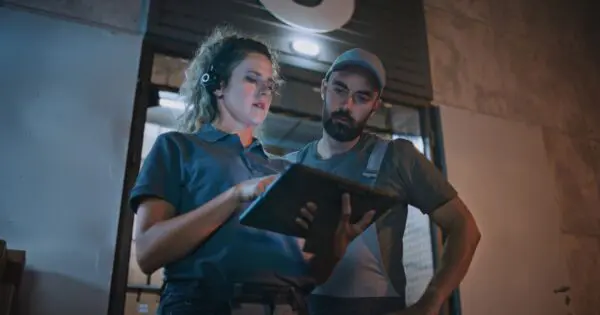As we all know Thanksgiving is a time for family, tradition, and as the name suggests giving thanks — but for any business that operates a fleet of vehicles, it is one of the highest-risk periods of the year.
The roads fill with people travelling to reunite with family while the commercial pressure of Black Friday piles on — creating a perfect storm for drivers. Incidents related to distraction, fatigue, and drunk driving rise sharply.
Fleet managers face the crucial dual challenge of meeting these high-stakes deadlines while keeping their drivers safe in an environment where the risk from other road users is massively elevated. This week, more than any other, the stakes are high, and the reality is sobering.
The Thanksgiving travel landscape
Thanksgiving falls on the fourth Thursday of November, but for fleets, the disruption isn’t limited to the day itself — it stretches across the whole week. Traffic spikes on Wednesday evening, stays heavy through Thursday and Friday, and surges again on Sunday as millions make their way home. It’s a familiar pattern, but one that consistently creates some of the trickiest road conditions of the year.
With offices and schools closed, the mix on the roads changes dramatically. Families traveling to see loved ones, commercial vehicles on extended routes, and holiday shoppers all share the same space. That shift in driver behavior and intent makes routine journeys slower, more congested, and far less predictable.
Then comes the Black Friday effect. Urban and suburban areas see a huge increase in footfall and vehicle traffic, adding to congestion and creating more chances for sudden stops, distracted maneuvers, and unpredictable behavior from other road users.
For your drivers, traffic is heavier, journeys take longer, and time behind the wheel increases. Add tighter schedules and mounting pressure, and the risk of accidents rises — making safety more important than ever.
Why the risks are higher during Thanksgiving
One factor rises above all others during Thanksgiving week: drunk driving. While there is an increase in traffic and all the risks that come with that, impaired driving is consistently the most dangerous risk on the road during this period. The stats speak for themselves:
- 868 people were killed in alcohol-related crashes over the Thanksgiving period between 2019 and 2023.
- In 2023, 174 fatalities occurred in drunk-driving crashes between 6 p.m. Wednesday and 5:59 a.m. Monday.
- On Thanksgiving Eve, 33% of drivers involved in fatal crashes were alcohol impaired.
Beyond impaired driving, congested roads, stop-and-go traffic, and the surge of pedestrians and shoppers — particularly around Black Friday — make navigation even more challenging. Combining these conditions with fatigued drivers and tighter schedules, make this one of the most hazardous times on the road.
What fleet managers can do
Preparation is key. Planning ahead can significantly reduce the likelihood of accidents during this high-risk week.
Communicate with drivers
- Pre-holiday briefings: Reinforce safety messaging, covering fatigue management, distraction avoidance, and defensive driving techniques. Remind drivers to stay vigilant for impaired drivers, especially on Thanksgiving Eve and during late-night deliveries.
- Emphasize rest and recovery: Encourage scheduled breaks, avoid unnecessary night driving, and prioritize sleep. Pressure to deliver quickly should never outweigh arriving home safely.
- Highlight the human impact: Behind every statistic is a real person. The 868 lives lost in drunk-driving crashes and the hundreds of accidents over Thanksgiving represent families affected and futures cut short. Every driver is someone’s loved one, and they deserve to make it home safely.
Leverage technology for safer, smoother journeys
- Stay on top of risks: Telematics provides in-cab alerts that detect speeding, hard braking, and erratic driving. Driver-facing cameras spot distraction and fatigue, helping drivers stay focused.
- Watch for pedestrians: AI-powered cameras detect people around the vehicle in real time, forward collision risks and tailgating, giving drivers time to react before an incident occurs.
- Avoid congestion: GPS and routing software provide live updates on traffic and road conditions, helping drivers steer clear of the busiest routes, reduce stop-and-go driving, and maintain safer speeds.
Safety isn’t just about following the rules — it’s about keeping drivers and the public safe. The goal is to prevent incidents before they happen, not just respond after the fact.
Supporting drivers during the busiest travel week
This Thanksgiving, fleets have the chance to make a real difference in driver safety. Thoughtful route planning, clear communication with drivers, leveraging technology, and keeping the human impact in mind all help reduce risk during one of the year’s busiest travel periods.
At the end of the day, the most important delivery isn’t a parcel or a shipment it’s every driver arriving home safely to their family. Every decision made this holiday week, from route planning to driver support, contributes to that goal.








